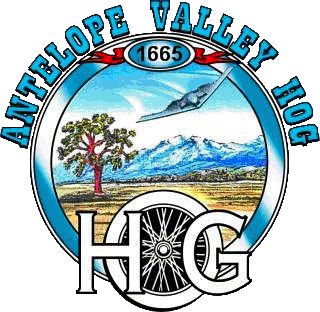
10 of Steve’s Best Thoughts for Safe Riding
YOU: Are you rested? Are you in good physical shape for today’s ride? Is all of your gear ready? Helmet? (DOT approved is best). Jacket, gloves, eye protection and boots, (over the ankle is best). Are you prepared for any abrupt change in weather?
T-CLOCKS: This is your basic bike checklist BEFORE you ride, each and every ride. Check your Tires, Controls, Lights, Oil, Chassis and Side-stands. If you Google this, you will find a number of more extensive lists.
SEE: Search, Evaluate, Execute. Getting on your bike and out to ride these are the constant practices to help keep you safe. These are reviewed in all safety classes. This acronym can also be; SKILLS, EXPERIENCE, & EGO. Use all of your learned abilities every time you ride.
INCREASE your VISIBILITY: Use lane position, use hand signals as well as your turn signals. You must assume that other drivers cannot see you or hear you.
WINDS: The Antelope Valley is unique and challenging in that winds can come up anytime. A big blast or gust of wind can move your bike over to the other side of a lane, or even the next lane. It can also surprise you at a stop sign, or signal.
ICY CONDITIONS: We get these during the winter months, so be aware that ice is transparent and can be anywhere on a cold day. Watch out for shady spots, painted lines, and gutters etc. Plan the start of your ride a little later in the day.
GROUP RIDING: Antelope Valley HOG, follows a simple, but effective, procedure for group riding. This is known as the “2”second rule. This means that two seconds time between your bike and the one in front of you. The other part is known as staggered positioning. This means the bike next to yours, in the same lane, should be 1 second ahead of yours. These intervals are “fluid” meaning that there may be times when they will be extended as riding conditions change.
PASSENGERS: Carrying a passenger can be a benefit in a group as you can have them relay the hand signals. They will also change the handling characteristics of your bike so be aware of those changes, and adjust accordingly.
OBJECTS in the ROAD: Do not dwell on something in the roadway be it litter, rocks, or other debris. When you do, you will find yourself headed towards it. Resist looking into storefront windows to see if you are cool. You are! You are on a HD.
PARKING LOT SKILLS: These are things taught in every riding class be it RIDERS EDGE or MSF. These will serve you well if practiced. To this day, I still pull into a deserted parking lot and practice a few of these skills. For example, give yourself a few extra minutes before meeting your group for a ride and practice a couple of these skills. On your way home after your ride, stop by that parking lot and do them again. You will most likely see improvement just because you were warmed up.
These are just some suggestions to help you stay safe and enjoy the ride!
